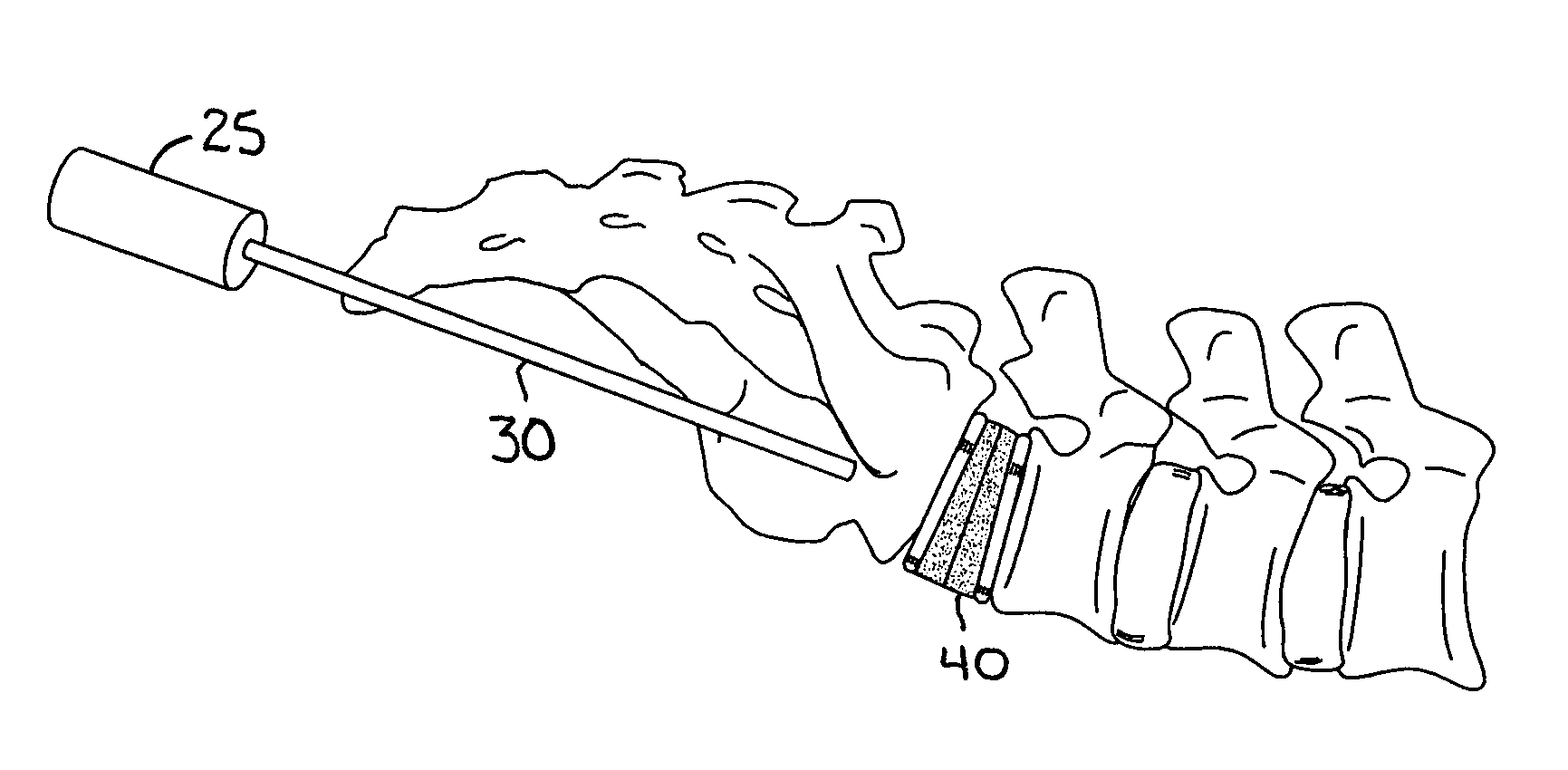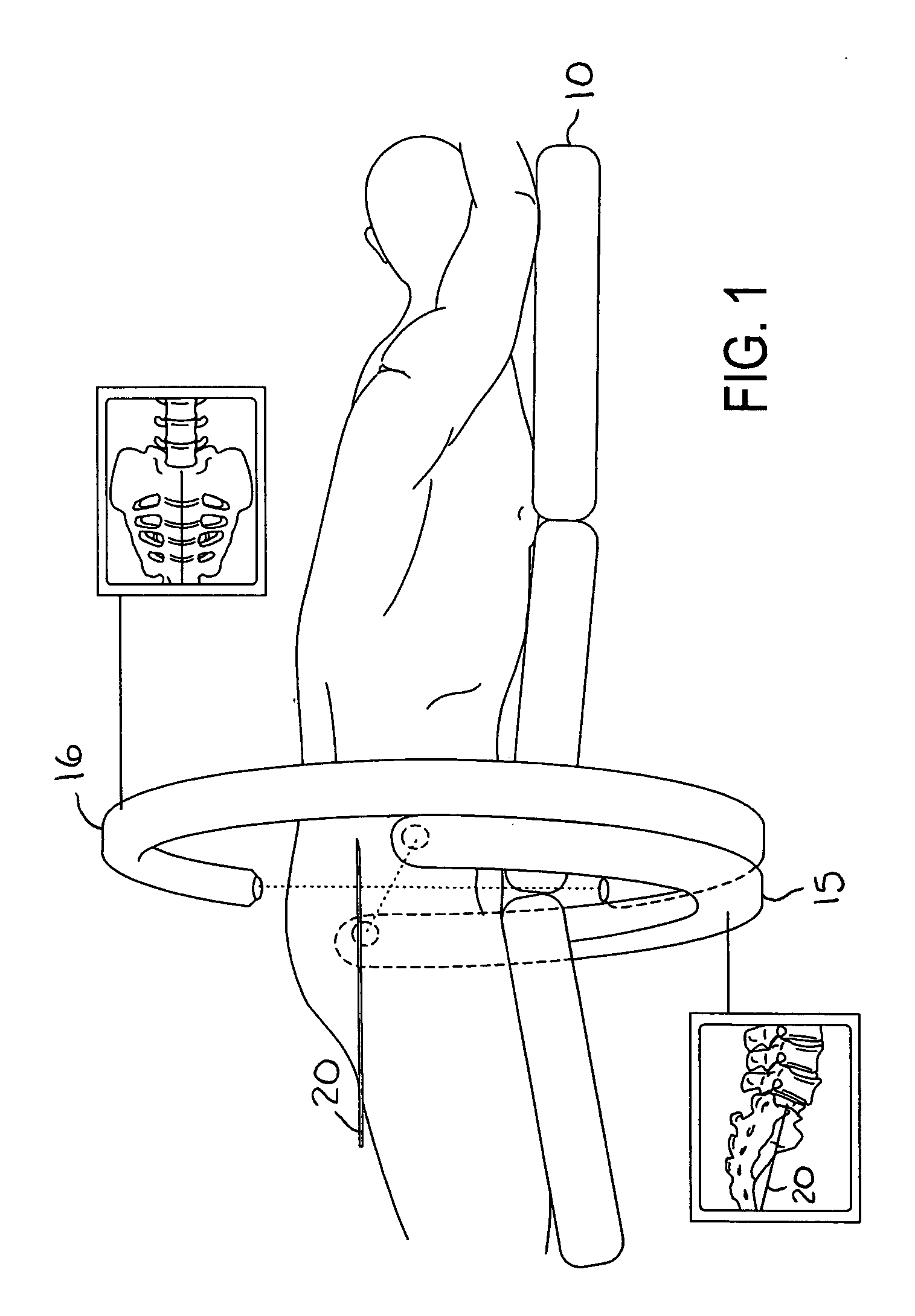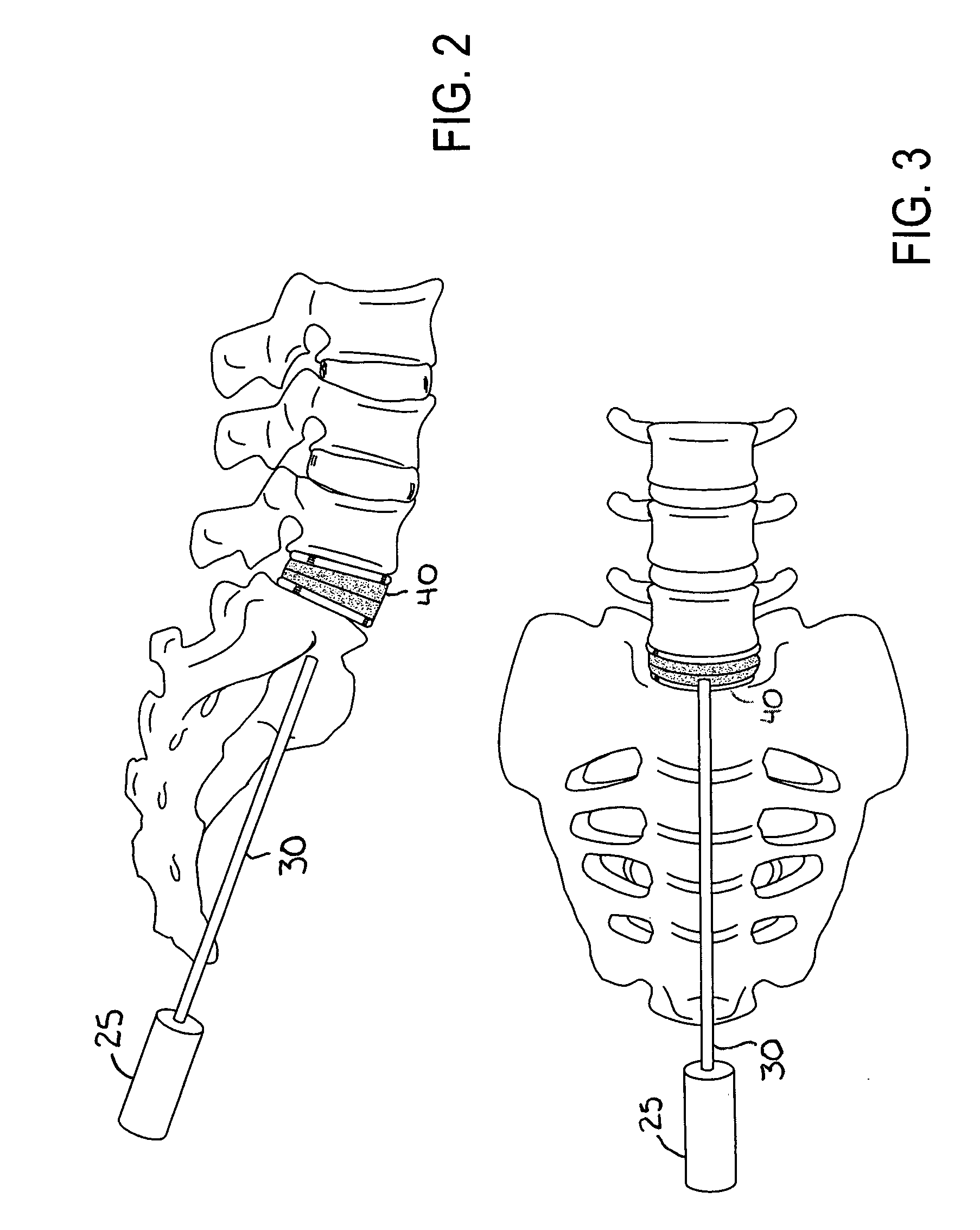Method of percutaneous paracoccygeal pre-sacral stabilization of a failed artificial disc replacement
a technology of artificial discs and paracoccygeal nerves, which is applied in the field of spinal column reconstruction procedures, can solve the problems of instability or dislocation/subluxation of the disc, severe and chronic pain of adr patients, and the success rate of adr surgery is less than optimal, so as to promote the fusion process and fortify the spine structur
- Summary
- Abstract
- Description
- Claims
- Application Information
AI Technical Summary
Benefits of technology
Problems solved by technology
Method used
Image
Examples
Embodiment Construction
[0022] Described below is a procedure for in situ stabilization of a failed ADR prior to a posterior fusion procedure. The stabilization employs a novel paracoccygeal percutaneous approach that is far safer than an anterior approach and permits greater fusion opportunity due to immobilization of the failed ADR. Prior to stabilization, it may be preferable to employ a postero-lateral approach described herein where it has been determined that there is a need to retrieve a dislocated or subluxed ADR prior to stabilization, or because direct visualization is desired through the endoscope of the concurrent stabilization procedure through the pre-sacral approach. Access through one or more poster-lateral portals may also assist also in evacuating debris that results from the drilling procedure and in cooling the drill with irrigation.
[0023] Percutaneous posterolateral endoscopic access to a failed ADR disc space requires initially the establishment of key fluoroscopic landmarks using th...
PUM
 Login to View More
Login to View More Abstract
Description
Claims
Application Information
 Login to View More
Login to View More - R&D
- Intellectual Property
- Life Sciences
- Materials
- Tech Scout
- Unparalleled Data Quality
- Higher Quality Content
- 60% Fewer Hallucinations
Browse by: Latest US Patents, China's latest patents, Technical Efficacy Thesaurus, Application Domain, Technology Topic, Popular Technical Reports.
© 2025 PatSnap. All rights reserved.Legal|Privacy policy|Modern Slavery Act Transparency Statement|Sitemap|About US| Contact US: help@patsnap.com



